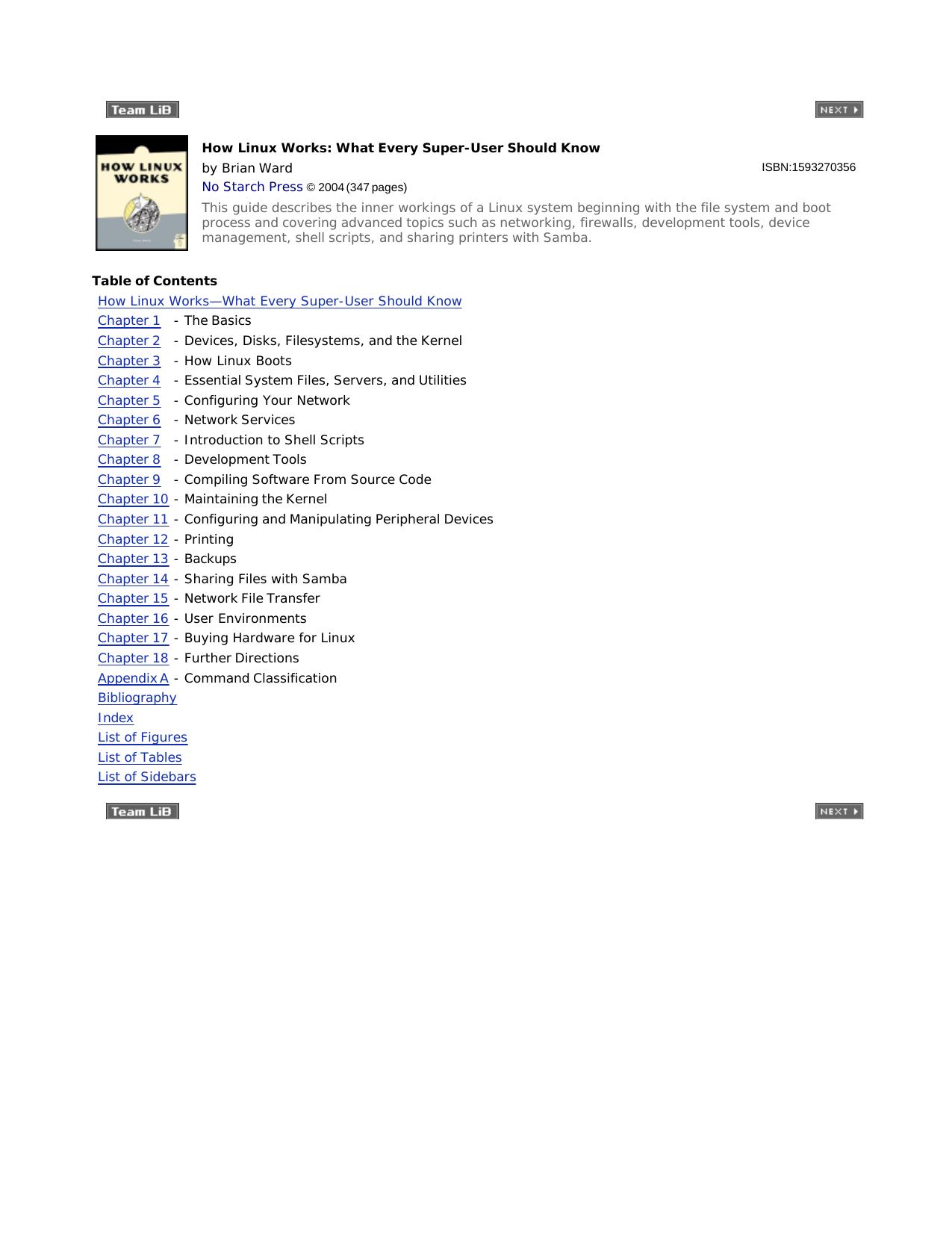How Linux Works: What Every Superuser Should Know by Brian Ward

Author:Brian Ward [Ward, Brian]
Language: eng
Format: epub, mobi, pdf
Tags: COMPUTERS / Operating Systems / Linux
ISBN: 9781593276454
Publisher: No Starch Press, Inc.
Published: 2014-11-14T05:00:00+00:00
Note
You might have heard of another set of layers known as the Open Systems Interconnection (OSI) Reference Model. This is a seven-layer network model often used in teaching and designing networks, but we won’t cover the OSI model because you’ll be working directly with the four layers described here. To learn a lot more about layers (and networks in general), see Andrew S. Tanenbaum and David J. Wetherall’s Computer Networks, 5th edition (Prentice Hall, 2010).
9.3 The Internet Layer
Rather than start at the very bottom of the network stack with the physical layer, we’ll start at the network layer because it can be easier to understand. The Internet as we currently know it is based on the Internet Protocol, version 4 (IPv4), though version 6 (IPv6) is gaining adoption. One of the most important aspects of the Internet layer is that it’s meant to be a software network that places no particular requirements on hardware or operating systems. The idea is that you can send and receive Internet packets over any kind of hardware, using any operating system.
The Internet’s topology is decentralized; it’s made up of smaller networks called subnets. The idea is that all subnets are interconnected in some way. For example, in Figure 9-1, the LAN is normally a single subnet.
A host can be attached to more than one subnet. As you saw in 9.1 Network Basics, that kind of host is called a router if it can transmit data from one subnet to another (another term for router is gateway). Figure 9-2 refines Figure 9-1 by identifying the LAN as a subnet, as well as Internet addresses for each host and the router. The router in the figure has two addresses, the local subnet 10.23.2.1 and the link to the Internet (but this Internet link’s address is not important right now so it’s just marked “Uplink Address”). We’ll look first at the addresses and then the subnet notation.
Each Internet host has at least one numeric IP address in the form of a.b.c.d, such as 10.23.2.37. An address in this notation is called a dotted-quad sequence. If a host is connected to multiple subnets, it has at least one IP address per subnet. Each host’s IP address should be unique across the entire Internet, but as you’ll see later, private networks and NAT can make this a little confusing.
Download
How Linux Works: What Every Superuser Should Know by Brian Ward.mobi
How Linux Works: What Every Superuser Should Know by Brian Ward.pdf
This site does not store any files on its server. We only index and link to content provided by other sites. Please contact the content providers to delete copyright contents if any and email us, we'll remove relevant links or contents immediately.
Test-Driven iOS Development with Swift 4 by Dominik Hauser(10312)
Filmora Efficient Editing by Alexander Zacharias(6711)
The Infinite Retina by Robert Scoble Irena Cronin(6210)
Learn Wireshark - Fundamentals of Wireshark. by Lisa Bock(4482)
Linux Device Driver Development Cookbook by Rodolfo Giometti(4041)
Edit Like a Pro with iMovie by Regit(3916)
Linux Administration Best Practices by Scott Alan Miller(2958)
Linux Command Line and Shell Scripting Techniques by Vedran Dakic & Jasmin Redzepagic(2908)
Mastering PowerShell Scripting - Fourth Edition by Chris Dent(2871)
Creative Projects for Rust Programmers by Carlo Milanesi(2709)
MCSA Windows Server 2016 Study Guide: Exam 70-740 by William Panek(2595)
Docker on Windows by Stoneman Elton(2392)
Kali Linux - An Ethical Hacker's Cookbook: End-to-end penetration testing solutions by Sharma Himanshu(2372)
Hands-On AWS Penetration Testing with Kali Linux by Karl Gilbert(2212)
Hands-On Linux for Architects by Denis Salamanca(2147)
Computers For Seniors For Dummies by Nancy C. Muir(2123)
Programming in C (4th Edition) (Developer's Library) by Stephen G. Kochan(2112)
The Old New Thing by Raymond Chen(2074)
Linux Kernel Debugging by Kaiwan N Billimoria(1830)
